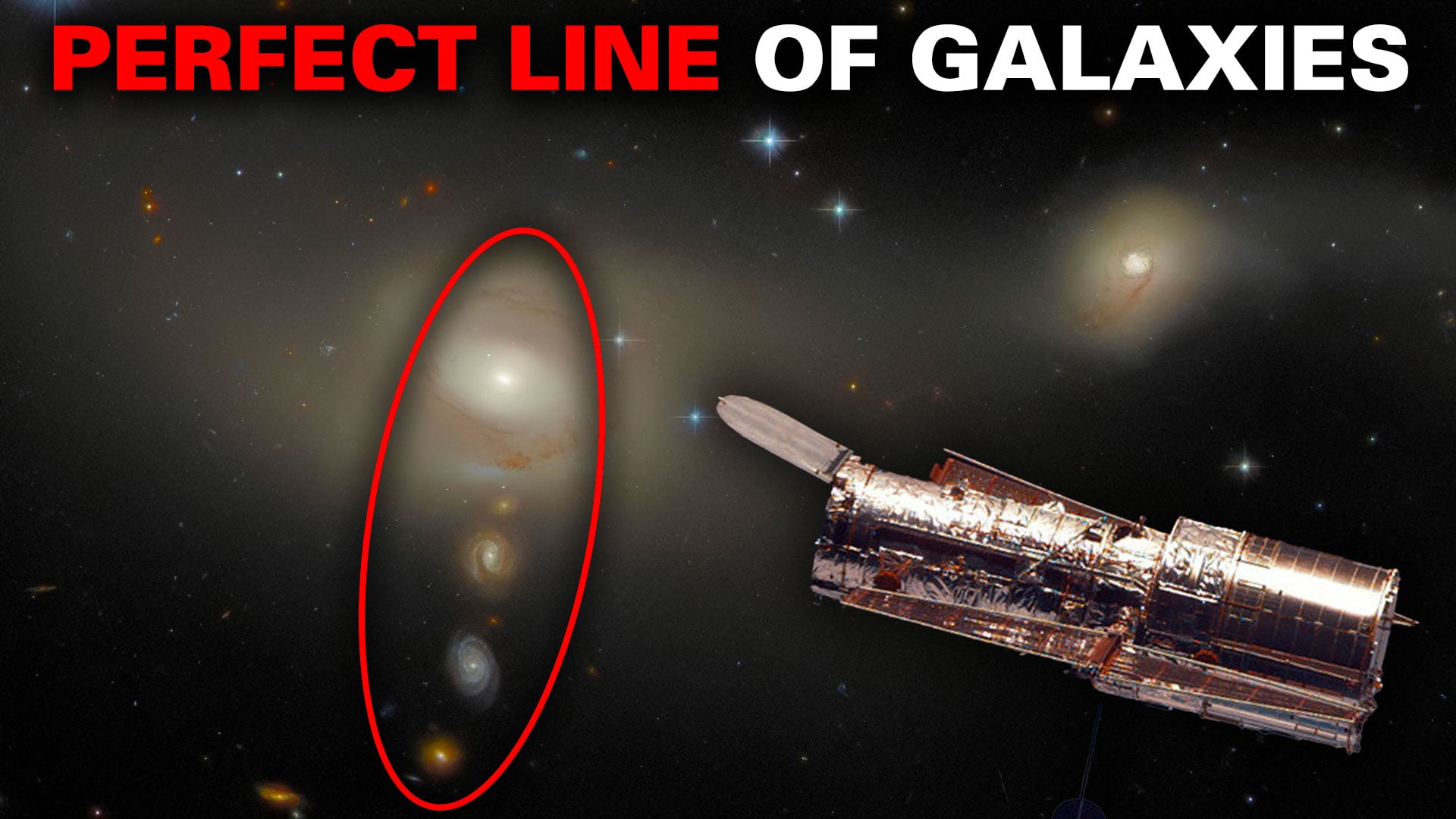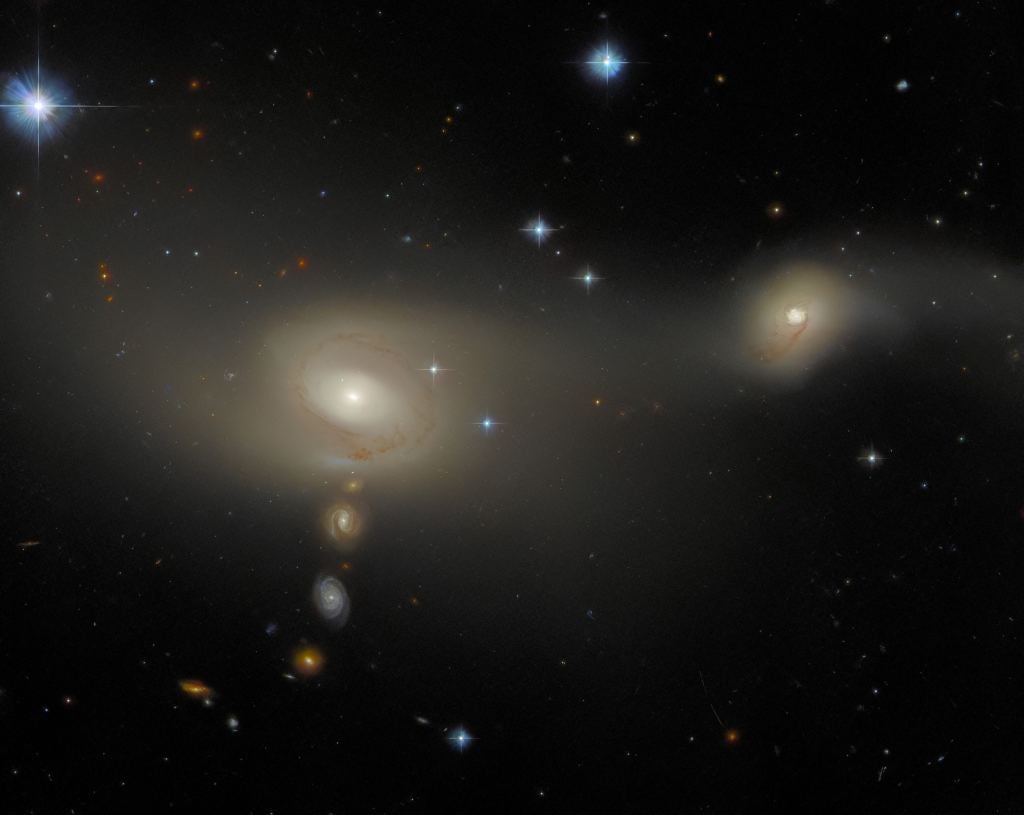This new image from the Hubble Space Telescope looks like a series of smaller spiral galaxies are falling out of a larger and brighter galaxy. That's just one of the many reasons this collection of galaxies belongs to the Arp-Madore catalogue of peculiar galaxies.
The two big and bright galaxies comprise an interacting galaxy system known as Arp-Madore 2105-332, which is located about 200 million light-years away. The smaller galaxies that form the 'falling line' of galaxies are not actually associated with Arp-Madore 2105-332, but are farther away. Hubble just happened to capture this beautiful coincidence, where the collection of background galaxies are fortuitously positioned to look like they are pouring out of the bigger galaxy on the left.
We can see all the galaxies in this image with great detail and clarity, thanks to the wonderful and enduring quality of Hubble's instruments.
The two large and bright galaxies of Arp-Madore 2105-332 are emission-line galaxies. As ESA explains, that means that when observed with spectrometers, the spectra of both galaxies exhibit characteristic bright peaks, known as emission lines.
By hunting for specific signs of emission from various elements within a galaxy's spectrum of light -- or, conversely, the signs of absorption from other elements, called absorption lines — astronomers can start to figure out what might be happening in a galaxy, such as the galaxy's type and composition, the density and temperature of any emitting gas, the star formation rate, or how massive the galaxy's central black hole might be.
If a galaxy's spectrum shows many emission lines and few absorption lines, this suggests it might be bursting with star formation and energetic stellar newborns. Conversely, if the spectrum shows a lot of absorption lines and few emission lines, this suggested that its star-forming material has been depleted and that its stars are mainly old. These two emission-line galaxies are highly energetic, and are hotbeds of star formation.
The large galaxy on the left is known individually as 2MASX J21080752-3314337. The galaxy on the right is called 2MASX J21080362-3313196. While those two names don't roll off the tongue very easily, astronomers use these two galaxies to provide valuable information. They are coordinates in the right ascension and declination system used widely by astronomers to locate astronomical objects.
 Universe Today
Universe Today

